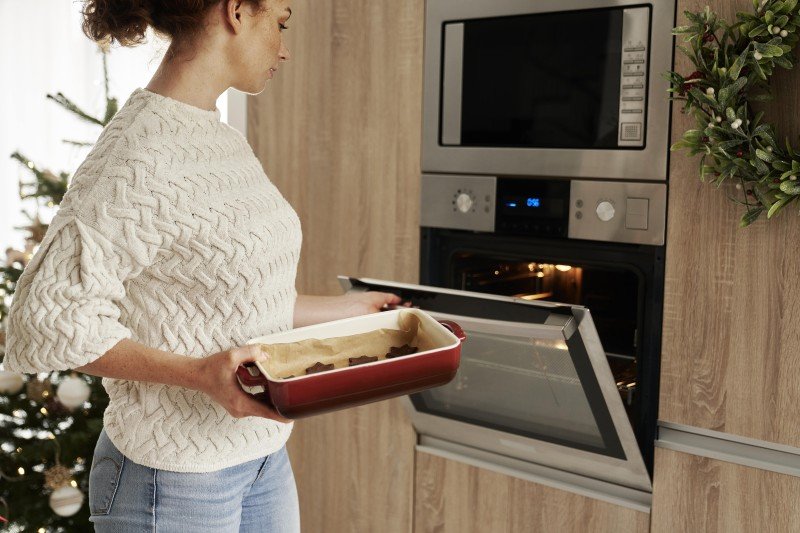How Ovens And Hobs Was Able To Become The No.1 Trend On Social Media
Understanding Ovens and Hobs: A Comprehensive Guide
Cooking has come a long method considering that the days of open flames and primary cooking approaches. Today, ovens and hobs are at the heart of contemporary kitchens, offering flexibility, effectiveness, and a selection of cooking options. Whether you are a newbie cook or a seasoned chef, understanding the distinctions, functions, and functions of these home appliances is important for optimizing culinary capacity. This article breaks down the various types of ovens and hobs offered on the market, their functionalities, and how to pick the best home appliances for your kitchen.
What is an Oven?
An oven is an enclosed area developed for heating and cooking food, offering different techniques such as baking, roasting, and broiling. Ovens are available in various types, each serving special cooking choices and requirements.
Types of Ovens
Conventional Ovens:
- Use gas or electrical power for heating.
- Typically consist of a heating aspect at the top and bottom.
- Perfect for basic baking tasks.
Convection Ovens:
- Use a fan to circulate hot air, promoting even cooking.
- Appropriate for baking, roasting, and reheating.
- Decreases cooking time and enhances flavor.
Steam Ovens:
- Utilize steam to cook food while maintaining wetness and nutrients.
- Outstanding for health-conscious cooking, such as veggies and fish.
Microwave Ovens:
- Use electromagnetic radiation to heat food quickly.
- Best for reheating leftovers or cooking basic meals.
Wall Ovens:
- Built into the wall, saving space in the kitchen.
- Available in various setups, including single or double ovens.
Secret Features of Ovens
- Temperature Control: Precision heating for various baking and preparing processes.
- Self-Cleaning Options: Some models have self-cleaning modes that utilize heats to burn food residue.
- Smart Features: Wi-Fi connection enables remote pre-heating, monitoring, and dish management via smart devices.
What is a Hob?
A hob is a cooking surface area, frequently referred to as a stove or cooktop, where pots and pans is placed for heating. Hobs are offered in different materials, sizes, and heating approaches, accommodating diverse cooking needs.
Types of Hobs
Gas Hobs:
- Utilize burner for direct flame cooking.
- Deal exact temperature level control and are preferred by numerous professional chefs.
Electric Hobs:
- Use electric coils or smooth tops.
- Some models are geared up with induction technology, providing quick heating through electro-magnetic energy.
Induction Hobs:
- Cookware needs to be made from magnetic products.
- Really energy-efficient, providing quick heat and decreasing burn threats.
Ceramic Hobs:
- Feature a glass-ceramic surface with heating elements beneath.
- Easy to clean however can be less energy-efficient than induction hobs.
Secret Features of Hobs
- Burner Configuration: Varies from two to six burners, depending on design and size.
- Power Levels: Multiple settings permit greater precision in cooking.
- Security Features: Options like flame failure gadgets and kid lock settings guarantee safety during cooking.
Picking the Right Oven and Hob
Picking the ideal oven and hob for your kitchen involves careful factor to consider of different aspects. Below is a list of concerns to direct your selection process:
- What is your primary cooking design?
- How much kitchen space do you have?
- What is your budget plan?
- Do you choose gas or electric devices?
- Are extra features like smart connectivity important to you?
Table Summary of Key Differences Between Ovens and Hobs
Feature
Oven
Hob
Functions
Baking, roasting, broiling
Boiling, frying, sautéing
Cooking Method
Enclosed heat
Direct cooking surface
Temperature Control
Adjustable settings
Range settings
Types
Electric, gas, convection, microwave
Gas, electric, induction, ceramic
Cooking Capacity
Larger (can cook several dishes)
Smaller (concentrate on immediate cooking)
Cleaning
Self-cleaning options offered
Usually manual cleaning needed
Upkeep Tips for Ovens and Hobs
Proper care and upkeep of your cooking appliances extend their life expectancy and effectiveness. Here are necessary maintenance tips:
Regular Cleaning:
- Clean the oven interior after each use to prevent residue buildup.
- Wipe down hob surfaces after preparing to avoid spots.
Check Seals:
- Ensure the oven door seals are undamaged to preserve energy performance.
- Change worn-out gaskets and seals as needed.
Examine Burners and Elements:
- For gas hobs, look for obstructions in burners.
- For electric hobs, inspect coils and surfaces for indications of wear.
FAQs
Can I utilize any cookware on induction hobs?
- No, induction hobs just deal with magnetic pots and pans, such as cast iron or stainless steel.
What is the most energy-efficient cooking device?
- Induction hobs are generally the most energy-efficient option, using less energy than standard gas or electric models.
How frequently should I clean my oven?
- It's a good idea to clean your oven every few months, or more regularly if you use it frequently.
Can I set up an oven and hob separately?
- Yes, both devices can be set up individually based on kitchen design and space.
What should I consider when installing a gas hob?
- Guarantee correct ventilation and abide by local security codes. It is advisable to have a professional install gas home appliances.
Comprehending the features, types, and maintenance of ovens and hobs can considerably improve your cooking experiences. Picking Ovens With Hobs customized to your cooking design, kitchen space, and security needs can make all the difference in achieving cooking success. By being informed about your alternatives, you can take pleasure in a more efficient and pleasurable cooking journey, bringing delicious meals to your table with ease.
